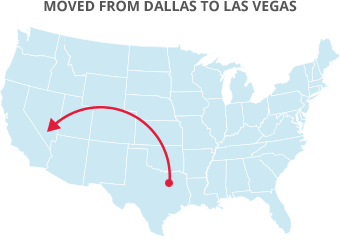

 Moving between homes is an enormous task often requiring a great deal of planning and coordination. A lot of people prefer to pack their own things from emptying dressers to carefully wrapping and labeling the cables from the entertainment center but when it comes to the big things, we usually need a little bit of help. In fact, one of the biggest risks involved in moving is scraping up either the home you’re leaving or the home you're moving into with oversized furniture pieces like bed frames, cabinets, and mirrors. Going around corners or through doorways is especially risky and there's almost always a few visible scrapes by the time you and your friends get the furniture settled. If you want to save a little money on putty and paint and/or your security deposit, take some advice from experienced movers and learn how to protect both homes from the dangers of moving large furniture.
Moving between homes is an enormous task often requiring a great deal of planning and coordination. A lot of people prefer to pack their own things from emptying dressers to carefully wrapping and labeling the cables from the entertainment center but when it comes to the big things, we usually need a little bit of help. In fact, one of the biggest risks involved in moving is scraping up either the home you’re leaving or the home you're moving into with oversized furniture pieces like bed frames, cabinets, and mirrors. Going around corners or through doorways is especially risky and there's almost always a few visible scrapes by the time you and your friends get the furniture settled. If you want to save a little money on putty and paint and/or your security deposit, take some advice from experienced movers and learn how to protect both homes from the dangers of moving large furniture.
Disassembly and Reassembly
The first step to safe moving is a willingness to take things apart. Bed frames have always been a challenge to get through doorways, down hallways, and especially up and down stairs. They are often solid and heavy to provide stable bed support and many have decorative head and foot boards that you'd also rather keep un-scuffed on the journey. You might be surprised how many items in your home can be easily disassembled and reassembled including bookshelves, the entertainment center, and many cabinets. Even dressers which usually stay in one piece are easier to maneuver if you take the drawers out first.
In many cases, the best way to keep both your furniture and walls safe is to simply disassemble it, move it in smaller pieces, and reassemble it in the room of your choice. Just make sure to keep the screws, nuts, and bolts in a labeled bag that can be found when it's needed again. If you're not comfortable with a wrench and screwdriver, a professional mover will be happy to take care of the disassembly and reassembly for you.
Moving Pads
Sometimes a large item can't be disassembled or you have a reason to keep it in one piece for the move. As usual, when you're dealing with large pieces of furniture often framed by wood and metal, your walls, corners, and even the banisters of your stairways are at risk. Professional movers know that rather than trying to achieve a perfect lack of bumps and scrapes, which is nearly impossible, a better answer is simply to protect the areas you're moving through.
Moving pads are essentially large sturdy blankets that can be draped or pinned over the walls, corners, stair railings, and other aspects of your home that might get scraped when large furniture is moving through. This is a fantastically simple trick that solves an age-old problem residents have been dealing with. Put up moving pads when moving large objects through tight spaces and anywhere you're worried about during the moving process.
Carpet Covers
Finally, the quality of your carpets should not be determined by the level of activity during a move. Most homes see a reasonable amount of daily traffic, people walking back and forth between the living room and kitchen and bathroom a few times a day. When you move, the number of trips across your carpet, often in big sturdy shoes, increases significantly.
To keep the dust and grime from falling onto your carpet and reduce the amount of wear and tear it takes from the constant walking back and forth packing and moving things, put down a padded carpet cover to provide temporary floor protection. This allows you to move around freely, work with large furniture, and pull things down from the attic or up from the basement without worrying about a major carpet cleaning afterward.
Here at A-1 Freeman Moving, we're dedicated to taking care of not only your things but the homes you're moving out of and into as well. With a few simple tricks learned from decades of helping people move from place to place, it's easy to protect the walls, banisters, carpets, and doorways of each home no matter how big your furniture is.

